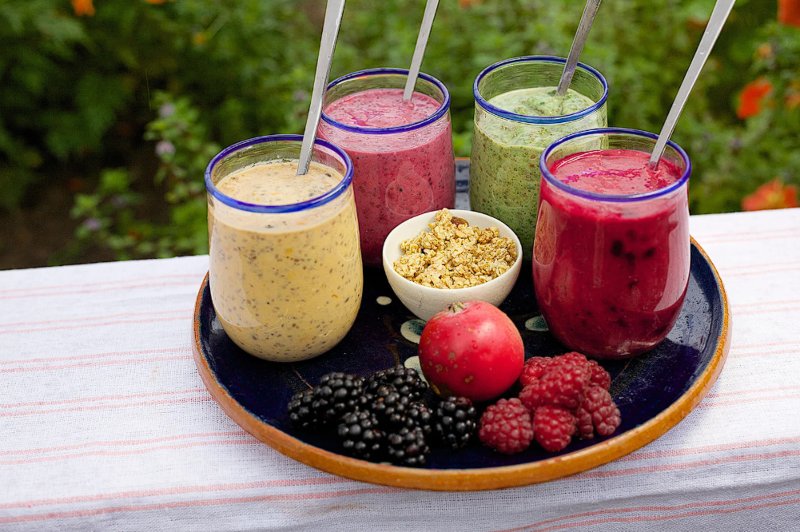Top 17 Healthy Food For Meetings

Introduction to Healthy Food for Meetings
Healthy Food For Meetings: When it comes to workplace meetings, food often plays a central role. However, the typical fare served at these gatherings may not always be the healthiest choice. In recent years, there has been a growing emphasis on providing nutritious options to fuel productivity and support overall well-being. This article delves into the importance of healthy food for meetings and provides practical tips for incorporating it into your workplace culture.
Table of Contents
Why is Healthy Food Important in Meetings?
Importance of Nutrition
Nutrition plays a crucial role in cognitive function and overall health. The foods we consume directly impact our energy levels, mood, and ability to concentrate. By choosing nutrient-dense options, we can optimize brain function and enhance productivity during meetings.
Impact on Productivity
Research has shown that poor dietary habits can negatively affect cognitive performance. Foods high in sugar and unhealthy fats can lead to energy crashes and brain fog, making it difficult to stay focused and engaged. On the other hand, a well-balanced meal can provide sustained energy and mental clarity, leading to more productive meetings.
Enhancing Focus and Attention
Certain nutrients, such as omega-3 fatty acids and antioxidants, have been linked to improved cognitive function and memory retention. By incorporating foods rich in these nutrients into meeting snacks and meals, companies can help employees stay sharp and attentive throughout the day. [Healthy Food For Meetings]

Key Components of Healthy Meeting Foods
When planning meeting menus, it’s important to prioritize foods that are rich in essential nutrients and low in added sugars and unhealthy fats. Here are some key components to consider:
Fresh Fruits and Vegetables
Include a variety of colorful fruits and vegetables to provide essential vitamins, minerals, and antioxidants. Options such as berries, leafy greens, and bell peppers make for nutritious and refreshing snacks.
Whole Grains
Choose whole grain options such as brown rice, quinoa, and whole wheat bread to provide fiber and sustained energy. These complex carbs aid in stabilizing blood sugar levels and encouraging feelings of fullness.
Lean Protein Sources
Incorporate lean protein sources such as grilled chicken, tofu, and legumes to support muscle repair and growth. Protein-rich foods also help keep hunger at bay and prevent energy dips during meetings.
Healthy Fats
Include sources of healthy fats such as avocado, nuts, and olive oil to support brain health and cognitive function. These fats are essential for cell membrane integrity and neurotransmitter production. [Healthy Food For Meetings]
Practical Tips for Providing Healthy Meeting Foods
Ensuring that healthy options are readily available at meetings requires careful planning and consideration. Here are some practical tips for making nutritious choices more accessible:
Planning Ahead
Plan meeting menus in advance to ensure that nutritious options are included. Consider rotating seasonal ingredients to keep offerings fresh and exciting.
Offering a Variety of Options
Provide a diverse selection of foods to accommodate different tastes and dietary preferences. Include vegetarian, vegan, and gluten-free options to cater to everyone’s needs. [Healthy Food For Meetings]
Considering Dietary Restrictions
Take into account any dietary restrictions or food allergies when planning meeting menus. Labeling dishes with common allergens can help employees make informed choices.
Making it Visually Appealing
Present healthy foods in an attractive and appealing manner to entice employees to choose them. Use colorful platters and garnishes to make fruits and vegetables more enticing. [Healthy Food For Meetings]

Healthy Beverage Choices
In addition to food choices, it’s important to offer healthy beverage options to keep employees hydrated and focused. Here are some alternatives to sugary drinks:
Importance of Hydration
Keeping well-hydrated is crucial for sustaining focus and cognitive abilities. Encourage employees to drink plenty of water throughout the day, especially during meetings.
Avoiding Sugary Drinks
Sugary beverages such as soda and fruit juice can cause energy crashes and contribute to weight gain. Opt for unsweetened options such as sparkling water, herbal teas, and infused waters instead.
Opting for Water, Herbal Teas, and Infused Waters
Water is the best choice for hydration, but herbal teas and infused waters can provide flavor without added sugars. Experiment with different flavor combinations using ingredients like citrus fruits, cucumbers, and mint. [Healthy Food For Meetings]
Healthy Snack Ideas for Meetings
Providing nutritious snacks during meetings can help keep energy levels up and prevent mid-meeting slumps. HConsider these nutritious snack suggestions:
Nuts and Seeds
Nuts and seeds are portable, satisfying snacks that are rich in protein, fiber, and healthy fats. Offer a variety of options such as almonds, walnuts, pumpkin seeds, and sunflower seeds.
Greek Yogurt and Fruit Parfaits
Greek yogurt is a rich source of protein and probiotics, while fruit provides natural sweetness and essential vitamins. Layer yogurt with fresh fruit and granola for a delicious and nutritious snack.
Veggie Platters with Hummus
Vegetable platters with hummus are a colorful and satisfying option that provides a combination of fiber, vitamins, and protein. Include a variety of vegetables such as carrots, celery, cucumbers, and bell peppers.
Whole Grain Crackers and Cheese
Pairing cheese with whole grain crackers offers a fulfilling blend of carbs, protein, and calcium. Choose whole grain crackers with minimal added sugars and pair with sliced cheese or cheese cubes. [Healthy Food For Meetings]
Incorporating Mindful Eating Practices
Encouraging employees to practice mindful eating during meetings can help them enjoy their food more fully and make healthier choices. Here are some tips for promoting mindful eating:
Eating Slowly and Savoring Each Bite
Encourage employees to eat slowly and pay attention to the flavors and textures of their food. Chewing each bite thoroughly can aid digestion and prevent overeating.
Being Aware of Portion Sizes
Provide appropriate portion sizes to prevent employees from overindulging. Use smaller plates and bowls to help control portion sizes and encourage mindful eating. [Healthy Food For Meetings]
Avoiding Distractions During Meals
Encourage employees to focus on their food and avoid distractions such as phones or laptops during meals. Eating mindfully can enhance the dining experience and promote better digestion.
Promoting Physical Activity During Meetings
In addition to providing healthy food options, companies can promote physical activity during meetings to support overall wellness. Here are some strategies to consider:
Incorporating Short Breaks for Movement
Encourage employees to take short breaks for movement during long meetings. Simple activities such as stretching or walking can help prevent stiffness and improve focus.
Encouraging Walking Meetings
Consider holding walking meetings outdoors to incorporate physical activity into the workday. Walking meetings can stimulate creativity and foster collaboration while providing health benefits. [Healthy Food For Meetings]
Stretching Exercises
Incorporate stretching exercises into meeting agendas to help employees relieve tension and improve flexibility. Simple stretches for the neck, shoulders, and back can be done seated or standing.

Case Studies: Companies Implementing Healthy Meeting Food Practices
Several companies have successfully implemented initiatives to promote healthy eating during meetings. These case studies highlight their strategies and the impact on employee health and productivity.
Success Stories and Their Impact
- Company A: Implemented a “Healthy Meeting Challenge” to encourage employees to choose nutritious options during meetings. Saw a 20% increase in employee engagement and productivity.
- Company B: Partnered with a local catering service to provide healthy, chef-prepared meals for meetings. Noticed a drop in absenteeism and a boost in employee morale.
Overcoming Challenges in Implementing Healthy Food Choices
While there are many benefits to providing healthy food options during meetings, companies may encounter challenges along the way. Below are some typical challenges and ways to conquer them:
Addressing Cost Concerns
One of the main barriers to implementing healthy food choices is the perceived cost. However, investing in employee health can lead to long-term cost savings through increased productivity and reduced healthcare costs. [Healthy Food For Meetings]
Dealing with Resistance or Skepticism
Some employees may be resistant to change or skeptical about the benefits of healthy eating. It’s important to communicate the rationale behind the initiative and provide education and support to encourage participation.
Finding Suitable Catering Options
Finding catering companies that offer healthy and delicious options can be challenging. Research local vendors and request sample menus to ensure they align with your company’s goals and preferences.
Measuring the Impact of Healthy Meeting Foods
To assess the effectiveness of your healthy meeting food initiatives, it’s important to gather feedback and track key metrics. Here are a few ways to gauge impact:
Employee Feedback and Surveys
Conduct surveys or focus groups to gather feedback from employees about their experience with healthy meeting foods. Utilize this information to make necessary adjustments and enhancements. [Healthy Food For Meetings]
Tracking Productivity and Engagement Levels
Monitor productivity and engagement levels before and after implementing healthy meeting food practices. Look for trends or correlations that indicate the impact on employee performance.
Sustainability Considerations in Choosing Meeting Foods
In addition to health considerations, sustainability is becoming increasingly important in food choices. Here are some ways to incorporate sustainability into meeting food options:
Opting for Locally Sourced and Organic Options
Choose ingredients that are locally sourced and organic whenever possible to support local farmers and reduce carbon emissions from transportation. Search for accreditations like USDA Organic or Fair Trade. [Healthy Food For Meetings]
Reducing Food Waste
Minimize food waste by planning meeting menus carefully and repurposing leftovers when possible. Donate excess food to local charities or compost organic waste to divert it from landfills.

Future Trends in Healthy Meeting Food
As the field of nutrition and wellness continues to evolve, so too will the trends in healthy meeting food. Here are some upcoming developments to keep an eye on:
Integration of Technology for Personalized Nutrition
Advances in technology, such as wearable devices and mobile apps, will enable companies to offer personalized nutrition recommendations based on individual preferences and dietary needs.
Emphasis on Holistic Wellness Programs
Companies will increasingly recognize the importance of holistic wellness programs that address not only nutrition, but also physical activity, stress management, and mental health. Healthy meeting food will be just one component of these comprehensive initiatives. [Healthy Food For Meetings]
Conclusion: Embracing Healthy Food for Productive Meetings
In conclusion, providing healthy food options during meetings is essential for supporting employee well-being and productivity. By prioritizing nutritious choices and promoting mindful eating practices, companies can create a workplace culture that values health and wellness.
FAQs
Q1: How can I encourage my company to provide healthier meeting food options?
Start by gathering support from colleagues who share your interest in healthy eating. Present evidence of the benefits of nutritious foods for productivity and well-being, and propose specific suggestions for improving meeting menus.
Q2: What are some budget-friendly healthy snack options for meetings?
Consider options such as homemade trail mix, popcorn seasoned with herbs and spices, or DIY fruit and nut bars. These snacks are cost-effective and can be customized to suit individual tastes.
Q3: How can I accommodate dietary restrictions when planning meeting menus?
Ask employees to provide information about their dietary needs and preferences in advance. Offer a variety of options to accommodate different dietary restrictions, and clearly label dishes with common allergens.
Q4: How can I encourage employees to participate in walking meetings?
Highlight the benefits of walking meetings, such as increased creativity and productivity, and lead by example. Choose scenic routes and incorporate opportunities for brainstorming and discussion along the way.
Q5: What should I do with leftover food from meetings?
Consider donating excess food to local charities or food banks to help reduce food waste and support community organizations.






